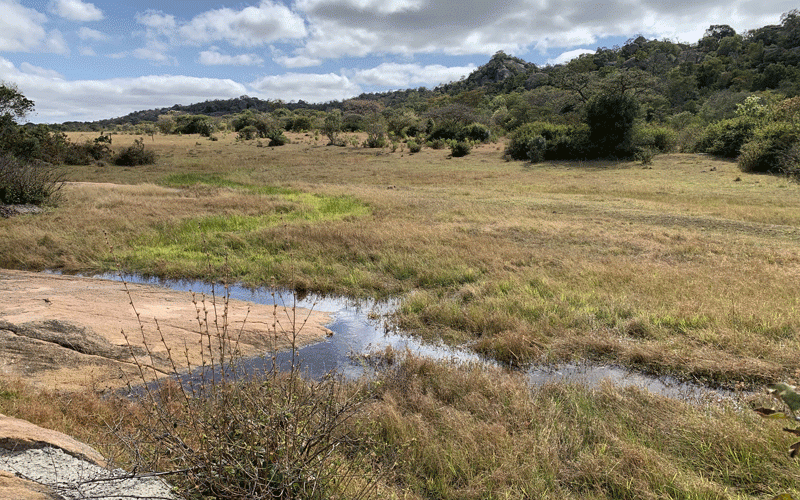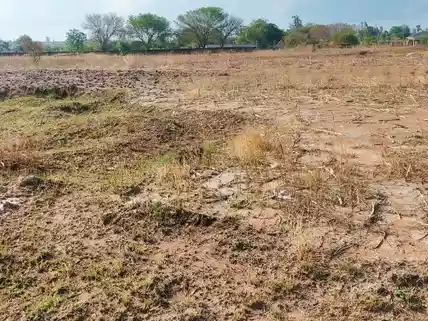
In Umzingwane’s Ward 9, Matabeleland South, a hidden natural gem lies beneath mosaics of rocky mountain ranges and thriving greenery. Morning Glory is a pristine wetland nestled at the heart of a four-village ring on the eastern edge of the Matobo World Heritage Site.
This ecological haven, teeming with diverse flora and fauna, is more than just a scenic wonder.
It’s a lifeline for local communities, supplying clean water and sustaining subsistence farming.
Yet, beneath its tranquil beauty, a silent conflict brews over its conservation.
“Morning Glory was chosen as a model for wetland protection to maximise its benefits,” explained Tafadzwa Tichagwa, a guide and representative of Dambari Wildlife Trust (DWT).
According to him, the wetland is central in local livelihoods as it is the source for clean portable water as well as a driving force for the subsistence farming based economy.
“Our goal is to protect the local wetlands, but we discovered a challenge that they exist in between the mountains where you will also find people and their environmentally destructive development activities,” Tichagwa said.
With human activity contesting for its natural endowment, safeguarding it hasn’t been easy.
- Cambria hints at Radar hive out
- Toothless Sadc faces irrelevance
- Russia’s ban of Jehovah’s Witnesses illegal, European human rights court says in landmark ruling
- Russia’s ban of Jehovah’s Witnesses illegal, European human rights court says in landmark ruling
Keep Reading
Beyond its immediate surroundings, water from Morning Glory feeds tributaries that flow into Mtshabezi Dam, a critical source of Bulawayo’s tap water.
Recognising its importance, DWT and local stakeholders fenced off the wetland’s core in 2022 under a United States-sponsored resilience project.
While community elders supported the perimeter fence initiative to prevent human-induced degradation, the youth showed little interest in the conservation efforts.
And, perhaps as a sign of protest to the cordoning off of the common resource or sheer criminality, the entire fence was stolen in an apparent display of a national crisis that has left environmentalists baffled over what long-lasting method to use for wetland protection.
Wetlands across Zimbabwe are under siege.
The sensitive sanctuaries face a severe crisis, with significant consequences for water resources, biodiversity, and overall ecological health.
This immense degradation is already bloating budgets across the board as authorities scratch heads over water security among other related concerns.
Experts say addressing this crisis requires a multi-pronged approach, including strengthened enforcement of environmental regulations, community-led conservation efforts, and addressing the root causes of wetland degradation, such as urban expansion, agricultural intensification, and climate change.
A 2021 Environmental Management Agency (EMA) national survey found only 17,63% of recorded wetlands in pristine condition, with over half moderately degraded and 26,72% severely damaged.
Urban expansion, climate change, and pollution were marked the most common catalysts, accelerating the decline.
An analysis by Harare Wetlands Trust, using field surveys and Google Earth imagery, found that wetlands across Harare declined by 50% between 2007 and 2019.The study focused on 10 key headwater wetlands, including Borrowdale.
In 2020, a United Nations Development Programme report found that in Harare alone, there were “30 (major) wetlands under threat from illegal settlements”.
While the government has often made the right noises —through sound policies— about protecting these wetlands, it has been accused of not backing up its words with action.
Wetlands also act as natural sponges for rainwater but because so many have been destroyed, heavy flooding has become a norm in many settlements countrywide.
Currently, EMA is collecting data to produce new statistics but a read through different reports shows that the situation is dire owing to a litany of unchecked anthropogenic factors.
“We must identify gaps and collaborate with authorities and stakeholders to protect these national treasures,” Tichagwa urges.
“If we ask older generations they would tell us that back in the day they maintained these ecosystems without the fence and we need to find out how.”
Historically, wetlands were preserved through cultural beliefs—taboos, sacred rites, and traditional practices.
“It was forbidden to wash clothes or fetch water with sooty pots in these spaces,” recalled villager Sethekele Ndlovu.
But such knowledge is fading.
The middle-aged villager admitted to forgetting most of this ancient wisdom in a stark reflection of the fading reliance on indigenous sciences.
Studies highlight indigenous systems as vital for sustainable wetland management, blending ecological, social, and cultural insights.
“We ought to have a convergence between modern science and our indigenous knowledge systems, let us tap into the local wisdom that has always been there,” chairperson of the parliamentary committee on environment, climate and wildlife, Sam Matema said.
“(Modern research) may say this (wetland) is a normal place but most of us believe in the mysteries of places like wetlands but how then do we converge modern science and village science?”
In Matobo’s Ward 9 the question lingers as the youth, long considered current and future custodians of the environment, repel stewardship.
For Tichagwa, the stolen fence is evidence of “how the concept of preservation has been misunderstood” and in most cases, he says, it is compounded by a lack of interest in retracing the past.
“Fencing is not the ultimate solution, but we need to deal with the attitude and management practices that we have on the ground,” he said.
While research has long proven that sustainable wetland protection is a shared community responsibility with top-down approaches bound to fail.
At Ntunjambili, some 10 kilometres from Morning Glory, a similar rehabilitation concept of fencing thrives while elsewhere in the same district —at Gulati wetland, the strategy fell through.
Extensive incorporation of African science could be the masterstroke in wetland management, says environmental researcher and conservation expert Solomon Mungure.
“There is science everywhere in old practices, the problem starts when we think that science is only laboratory tested and it should be proven in some foreign place to be considered correct,” he said.
As Zimbabwe prepares to host over 170 countries at this year’s Ramsar Convention on Wetlands COP15 set for July 23-31, 2025, in Victoria Falls, EMA provincial manager for Matabeleland South Decent Ndlovu called for traditional leaders to reinforce their position as chief custodians of the environment.
“If we look at other bigger wetlands we have in the country, the communities are custodians and in most of them there is what we call natural fencing which refers to the traditional rites, norms, values as well as taboos,” said Ndlovu.
“We need traditional leaders taking charge of their role in conservation to ensure that wetlands are effectively protected.”
The global summit is dedicated to protecting the world’s remaining wetlands, but conservationists say the country is losing its own at an alarming rate, and in many cases through questionable land deals and by ignoring environmental regulations.
For conservationists like Mungure, the answer lies in valuing African science.
“Science isn’t confined to labs. Indigenous practices, born of lived experience, have protected ecosystems for generations. We must revive this knowledge.”
At Morning Glory, the stolen fence is a stark reminder: lasting conservation demands more than barriers — it requires community buy-in, cultural revival and a return to the wisdom that once kept these lands alive.
A new report released by the Convention on Wetlands last week warned that wetlands were disappearing at an unnerving rate.
If current trends continued, up to 20% of the world’s remaining wetlands could vanish by 2050, putting an estimated US$39 trillion in global benefits at risk, the report said.
Wetlands currently cover about 6% of the Earth’s surface, but contribute more than 7,5% of global GDP through services that also include carbon storage.
Despite the undeniable importance, they are vanishing faster than any other ecosystem at an average of 0,52% per year.
Since 1970, 22% of wetlands have been lost, equivalent to more than half a billion football pitches.











